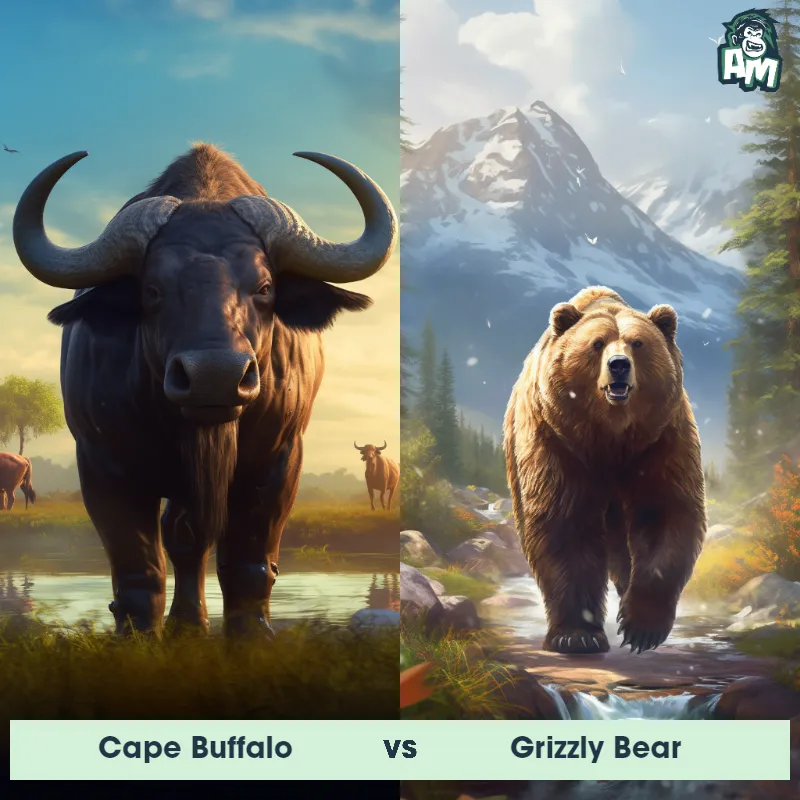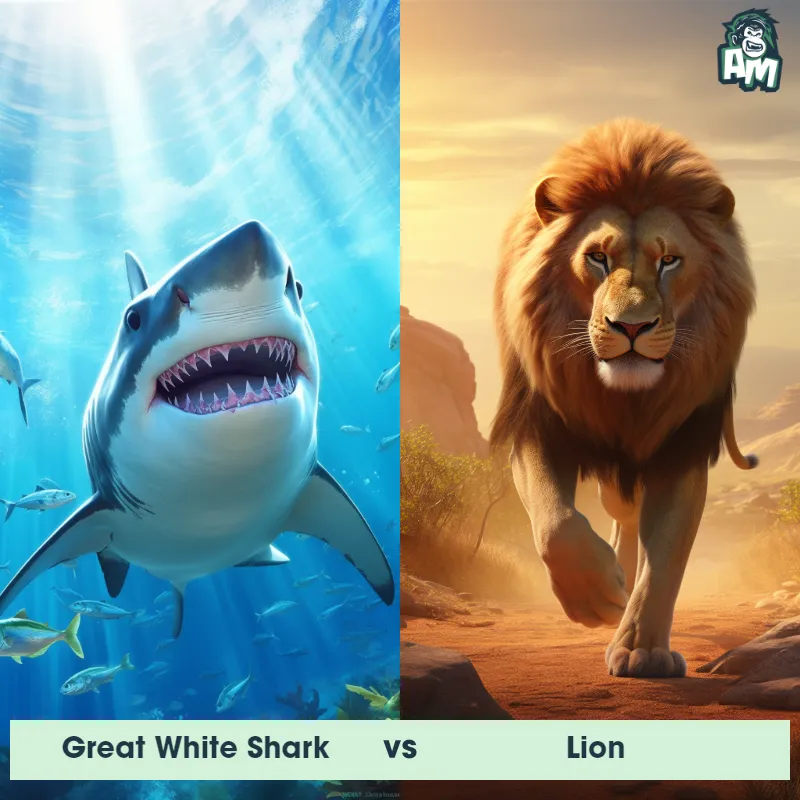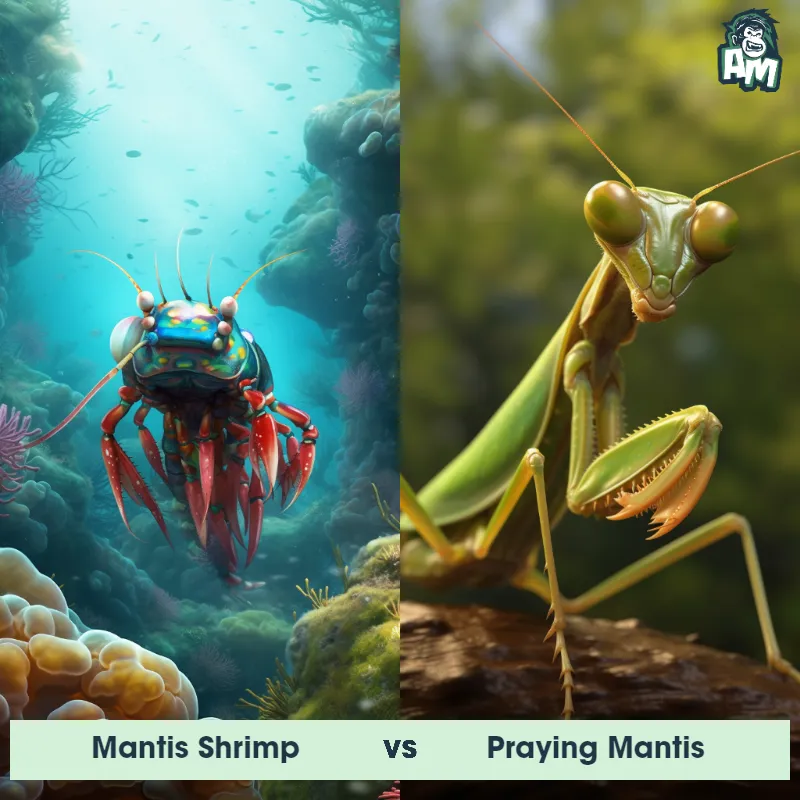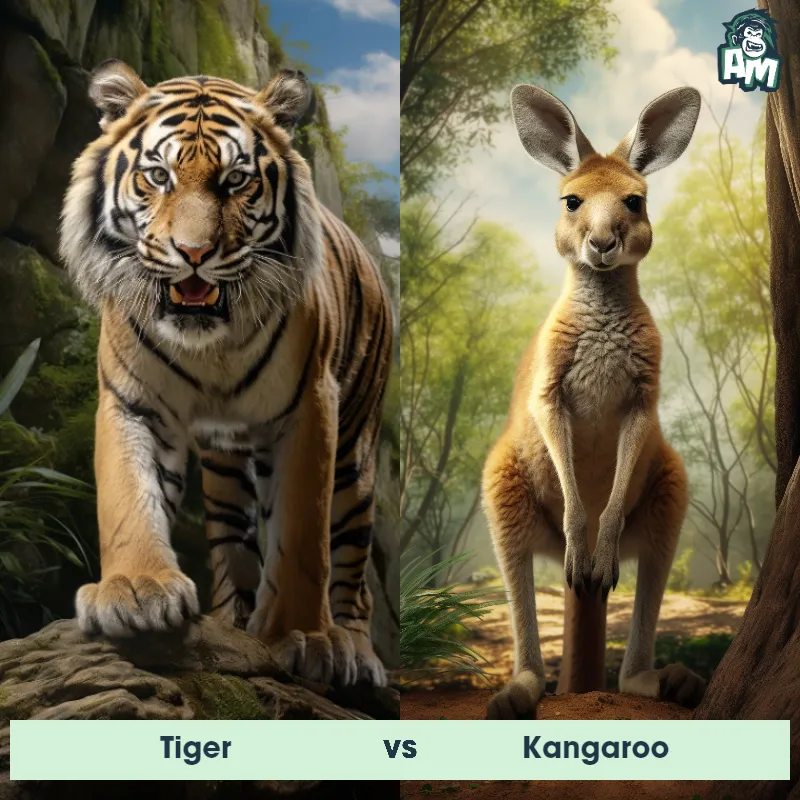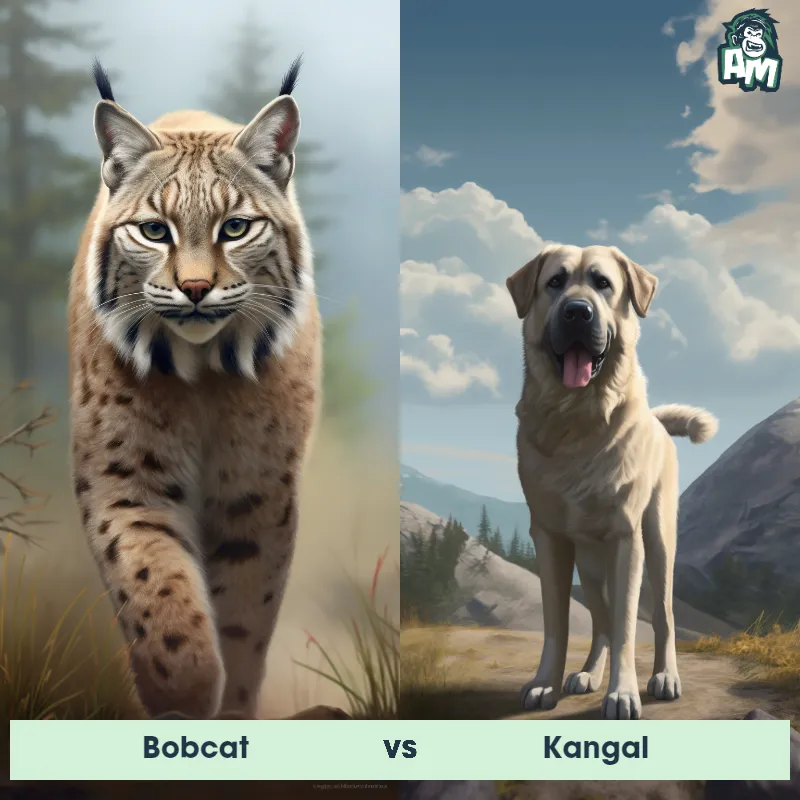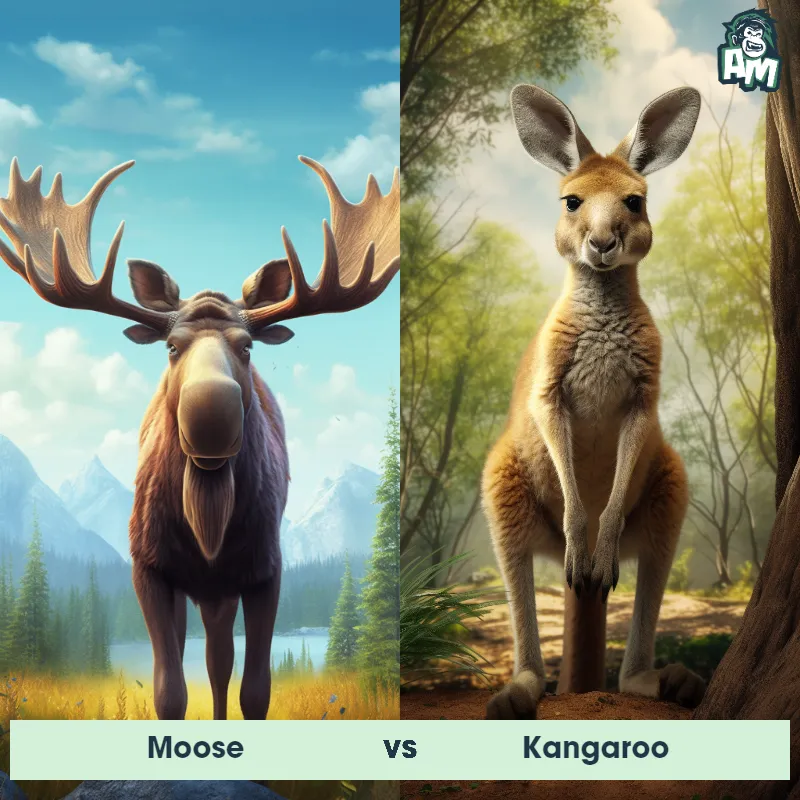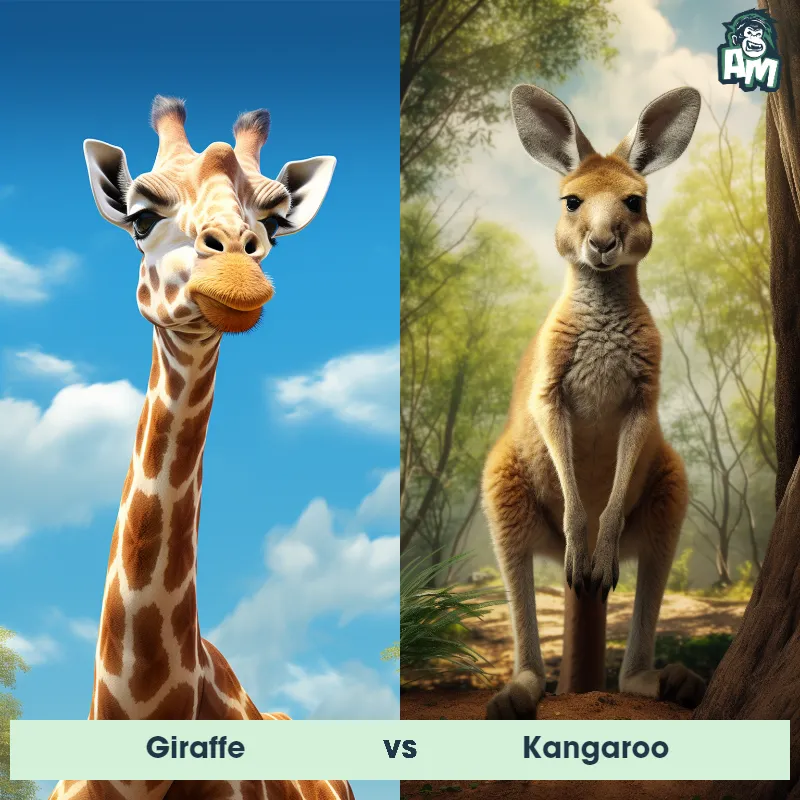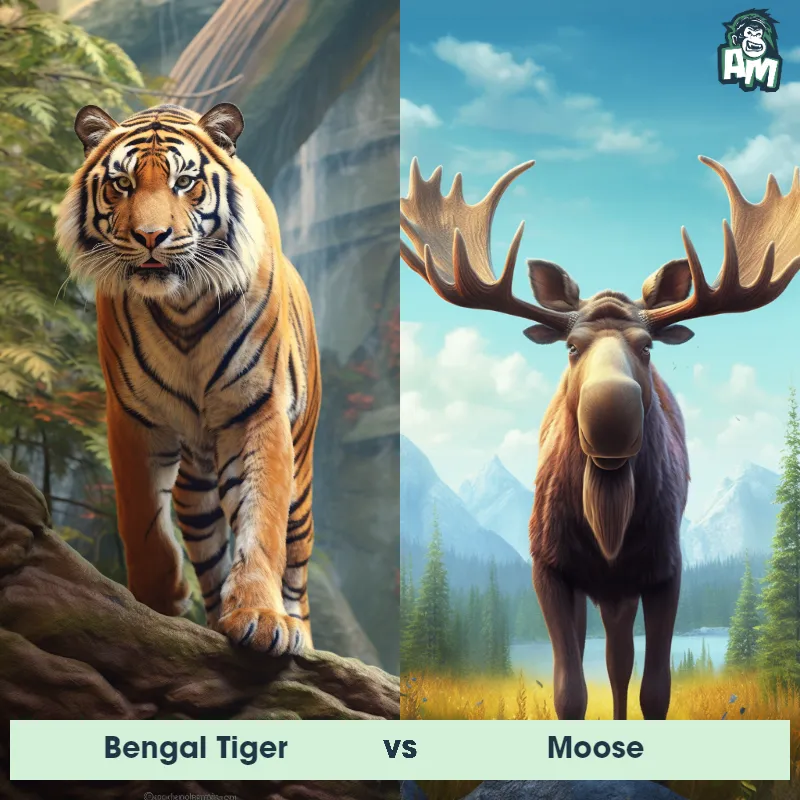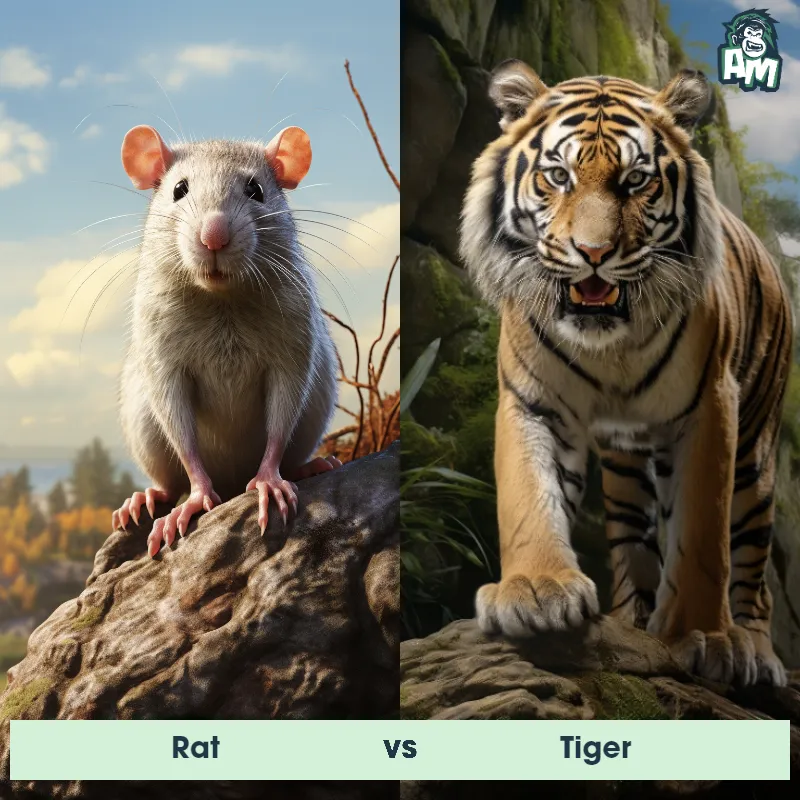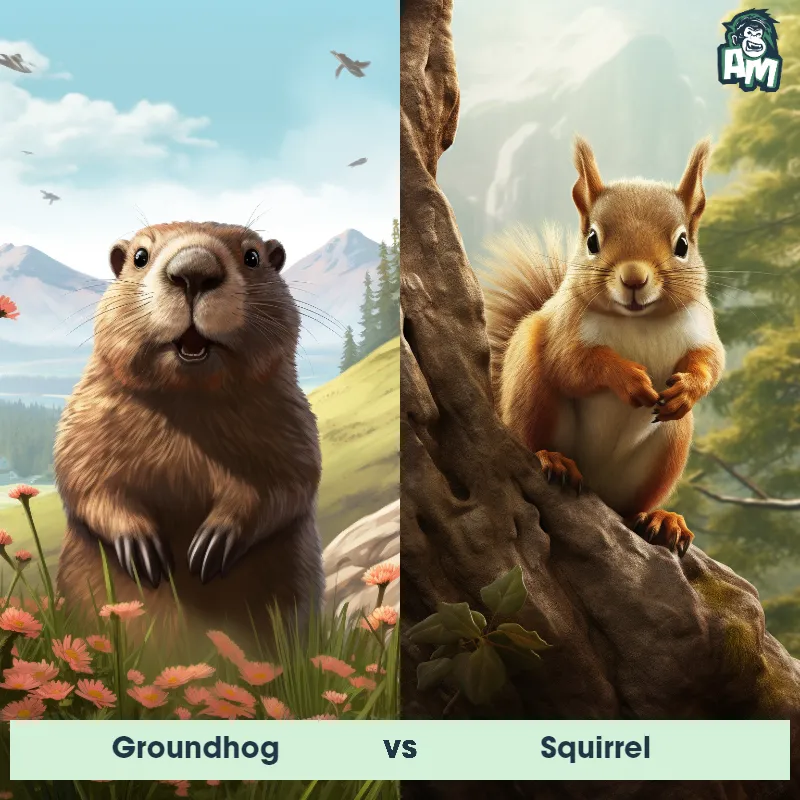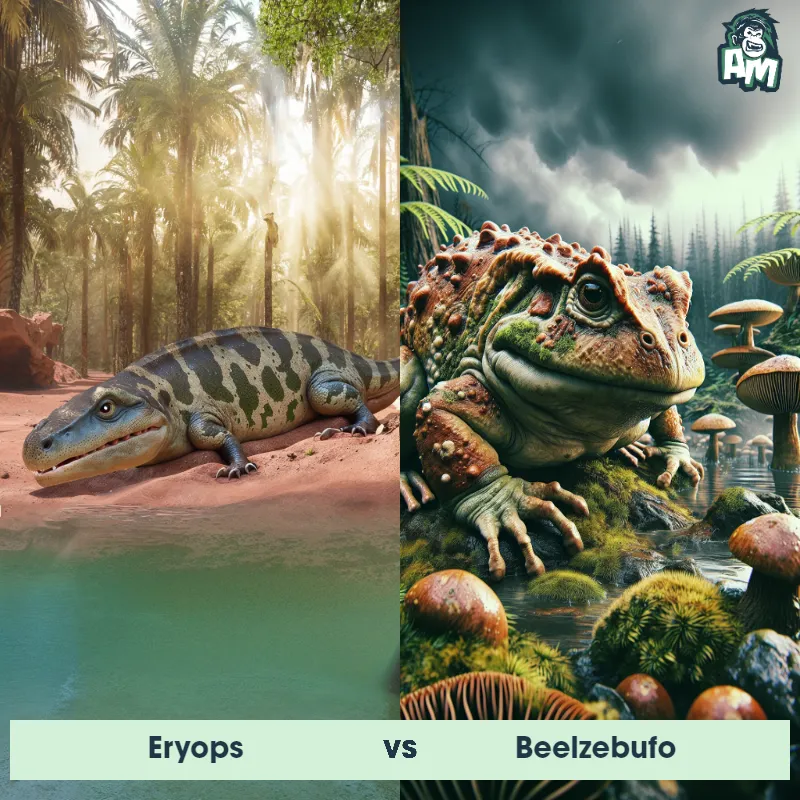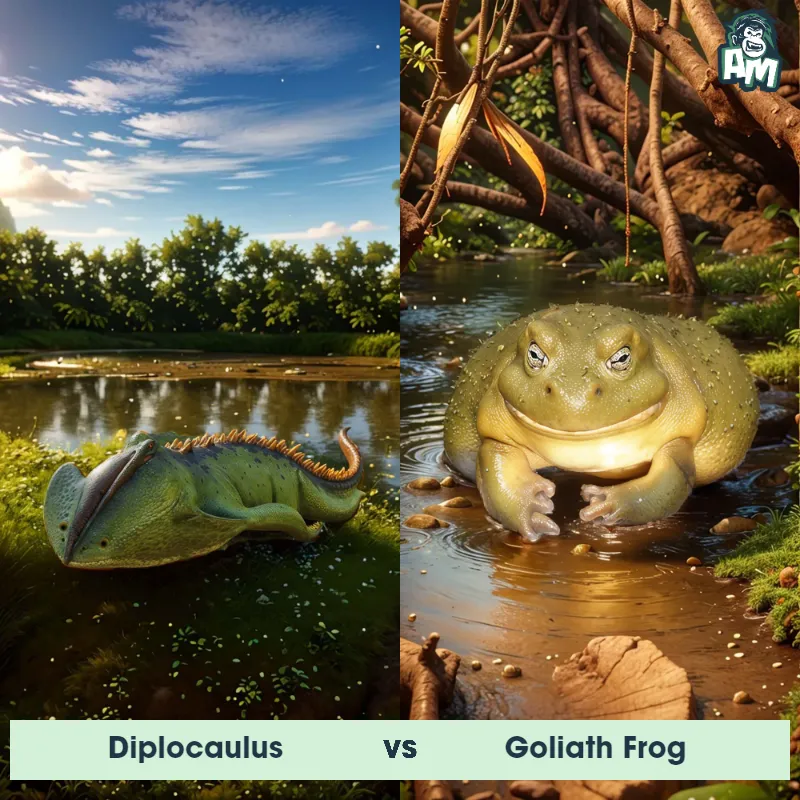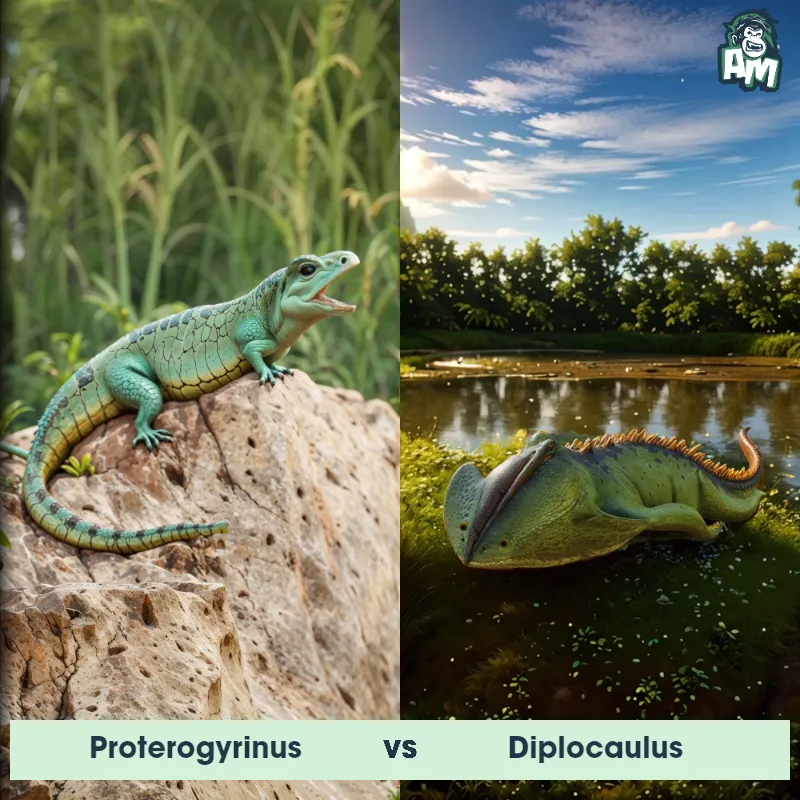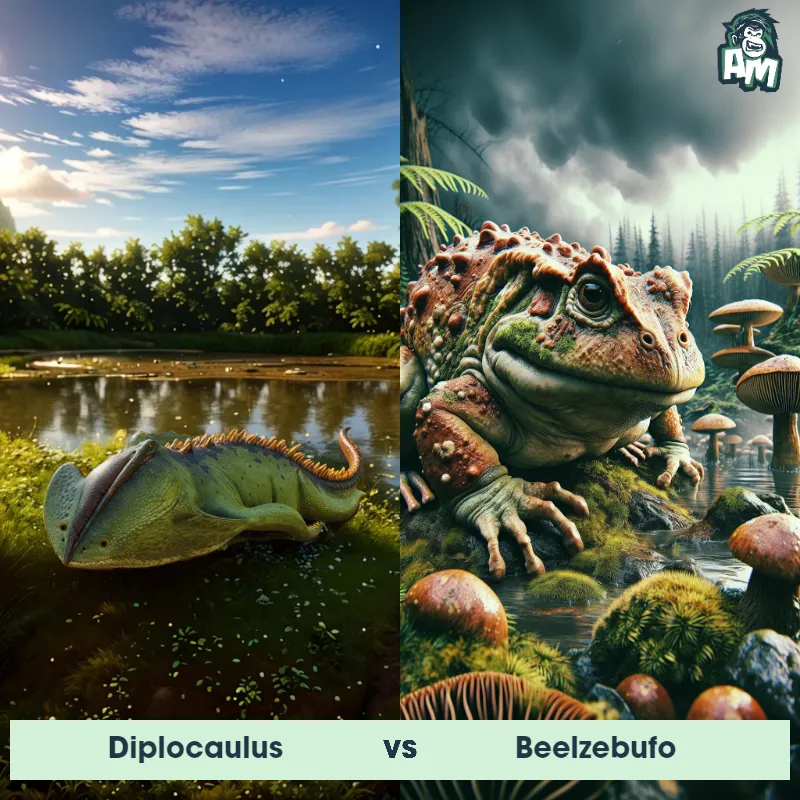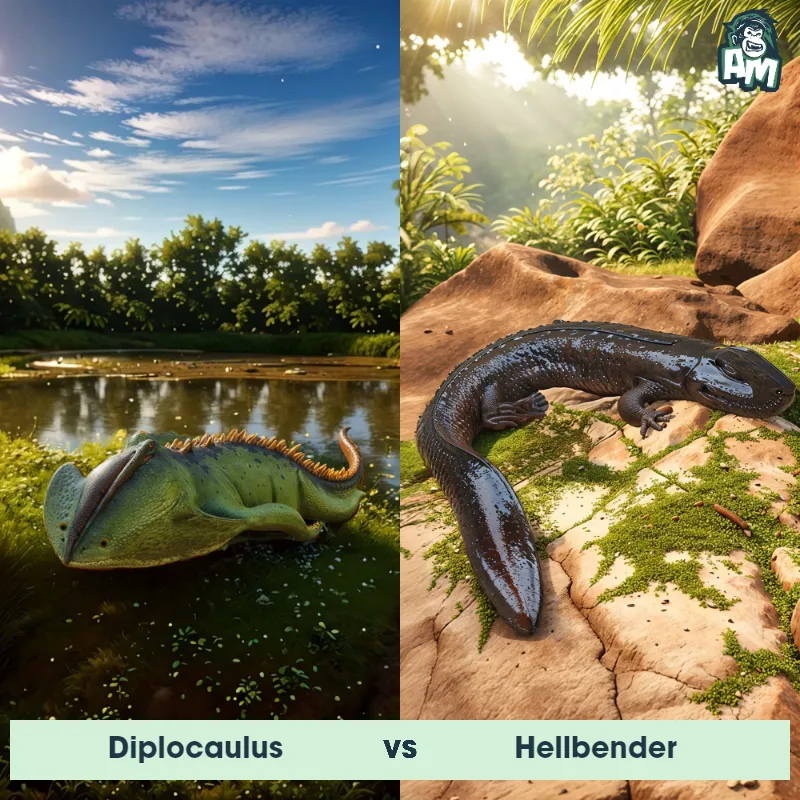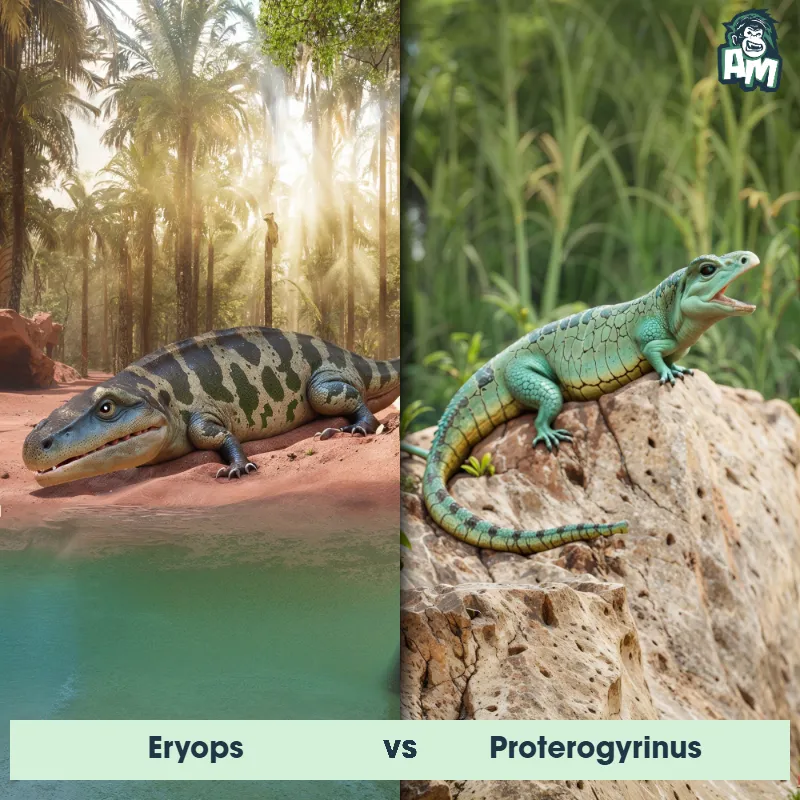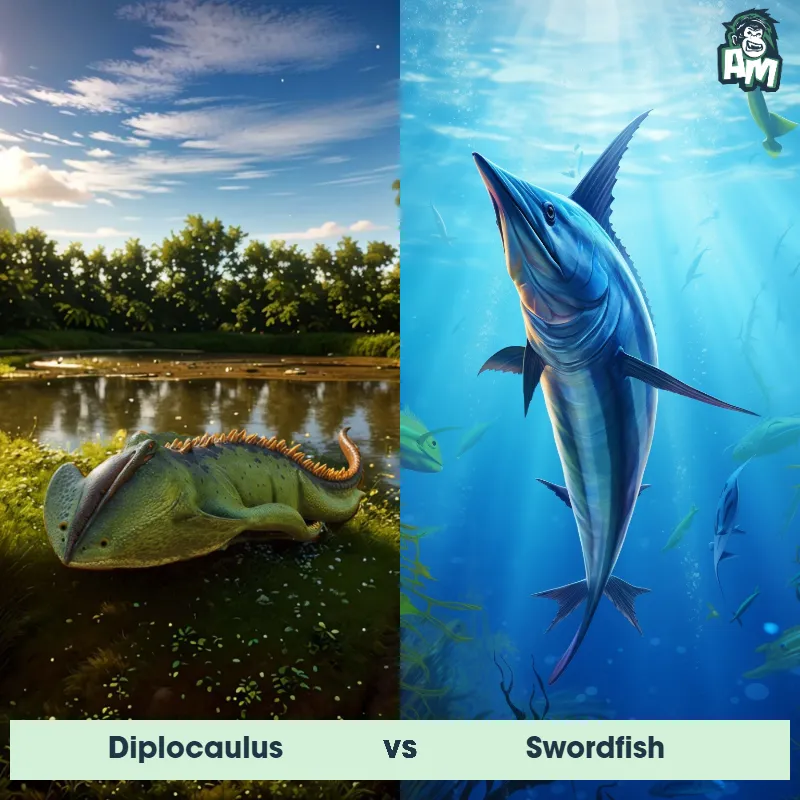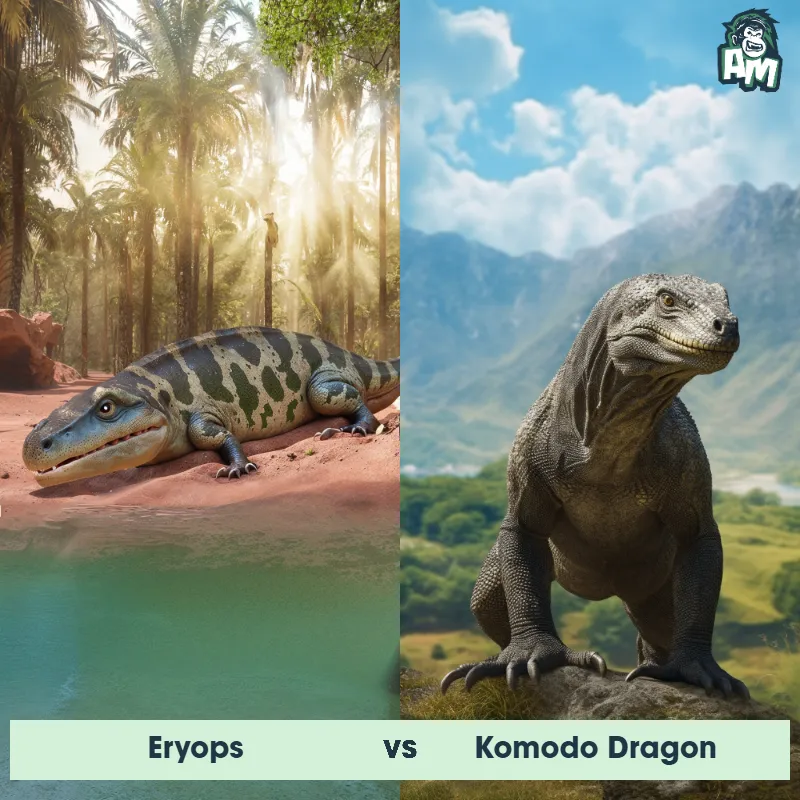Eryops vs DiplocaulusSee Who Wins

Welcome to this exciting matchup between the Eryops and Diplocaulus! These ancient creatures are ready to battle it out in the arena tonight. Let's see who will come out on top in this three round fight.
Contender 1: Eryops
Eryops, commonly known as the "giant frog," was a prehistoric amphibian that lived during the late Carboniferous and early Permian periods. It had a sturdy body, short legs, and a broad skull with sharp teeth. Eryops could grow up to 6 feet in length and was a formidable predator in its environment.
Fun Fact: Eryops is one of the largest amphibians that ever existed, showing just how diverse and impressive prehistoric animal life could be.
Contender 2: Diplocaulus
The Diplocaulus, also known as the "boomerang-headed amphibian," was a prehistoric creature from the Permian period. It had a unique, boomerang-shaped skull that made it easily recognizable. This amphibian had short, stout legs and a streamlined body, perfect for swimming in the waters it inhabited. Its diet likely consisted of small fish and other aquatic organisms.
Fun Fact: One fun fact about Diplocaulus is that despite its appearance, the boomerang-shaped skull was not used as a weapon or for defense, but rather as a way to improve its buoyancy while swimming.
Matchup Stats
| Eryops | Diplocaulus | |
|---|---|---|
| Size | Up to 6 feet (1.8 meters) in length | Approximately 2-3 feet (60-90 cm) in length |
| Weight | Around 200-300 pounds (90-136 kilograms) | Around 10-20 pounds (4.5-9 kg) |
| Speed | 5-10mph (8-16km/h) | 7 mph (11 km/h) |
| Key Strength | Powerful jaws and sharp teeth for capturing prey | Speed and agility in water |
| Biggest Weakness | Short legs that may limit agility in combat | Vulnerability on land |
Current Votes
Eryops vs Diplocaulus
See Who Wins
View More Matches
Looking For More?
Similar Matches
Scientific Stats
| Eryops | Diplocaulus | |
|---|---|---|
| Scientific Name | Eryops | Diplocaulus |
| Family | Eryopidae | Diplocaulidae |
| Habitat | Freshwater environments | Freshwater |
| Geography | North America | North America |
| Diet | Carnivorous, feeding on fish and other small aquatic animals | Small fish and aquatic organisms |
| Lifespan | 15 years - 20 years | 10 years - 15 years |
Key Differences between Eryops and Diplocaulus
- Coloration: Eryops is typically a dull, earthy color to blend in with its surroundings, while Diplocaulus has striking red and black markings along its body for warning and camouflage.
- Body shape: Eryops has a bulky, barrel-shaped body with short legs, while Diplocaulus has a distinctive boomerang-shaped skull that gives it a unique appearance.
- Environment: Eryops is primarily a terrestrial creature, living and hunting on land, whereas Diplocaulus is a semi-aquatic amphibian that inhabits freshwater environments and relies on water for survival.
- Head shape: Eryops has a broad, flat skull with large teeth for crushing prey, in contrast to the elongated, narrow skull of Diplocaulus with sharp teeth designed for catching fish.
- Limbs: Eryops has strong, muscular limbs with clawed toes for digging and walking on land, whereas Diplocaulus has small, paddle-like limbs adapted for swimming in water.
- Size: Eryops is significantly larger than Diplocaulus, with Eryops reaching lengths of up to 6 feet compared to the smaller Diplocaulus that typically only grows to about 2 feet.



